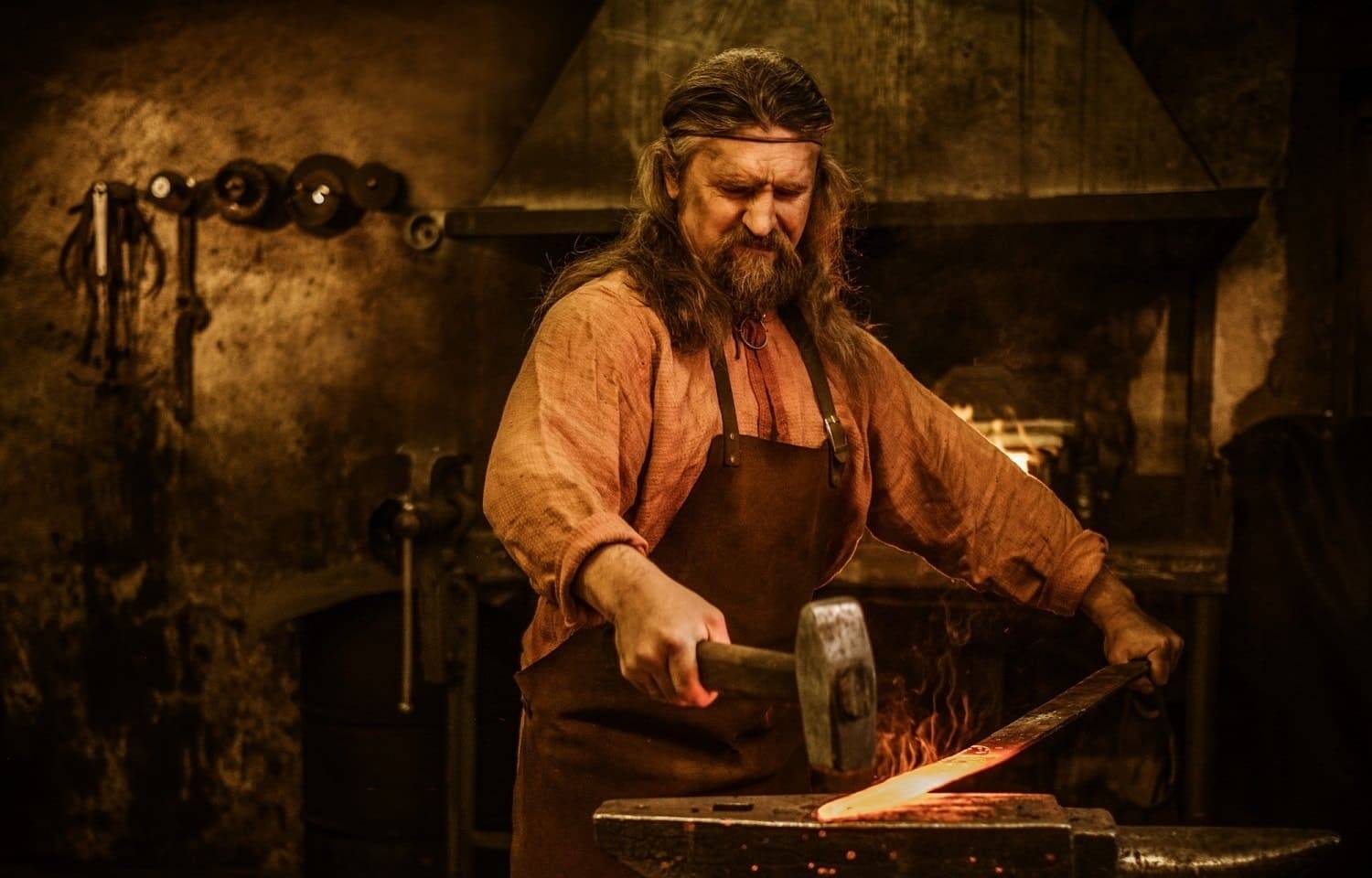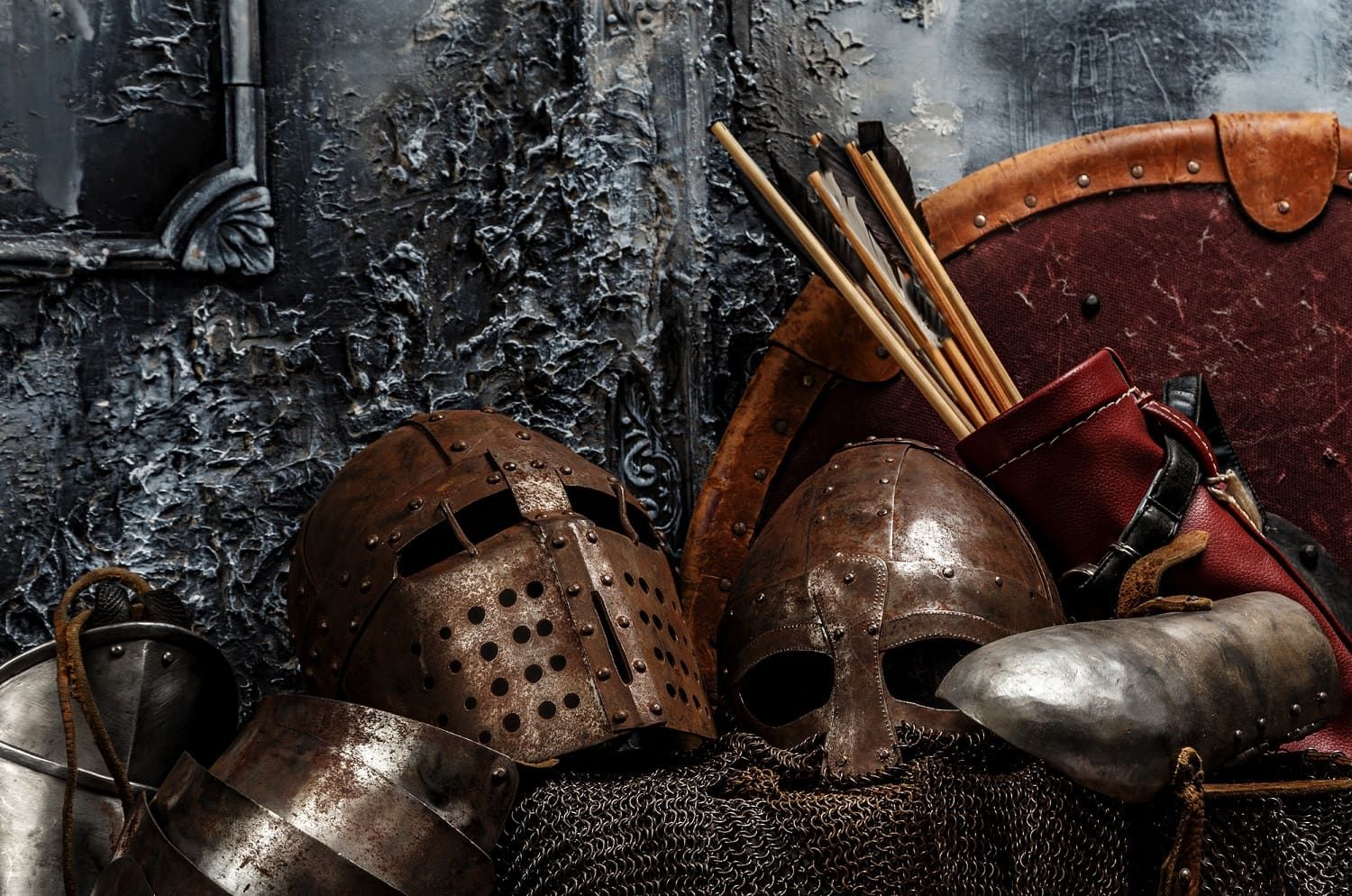Due to iron, the primitive tribal system was replaced by the emerging class society, the formation of states and the establishment of new trade relations. During the early Iron Age, the famous Great Silk Road trade route was established.
However unreal it might sound, everything began with iron of extra-terrestrial origin… Yes, iron was first made from meteorites. Such iron goods had high nickel content. Later, terrestrial iron was used to manufacture of goods.
Despite the greater technological complexity and labour intensity required to make iron than bronze, the iron age confidently overtook the bronze age because iron occurs more frequently in nature than bronze. During the bronze age, many metal goods were re-worked into arms. A shortage of tin for casting bronze is what forced ancient steelmakerso start looking for an alternative. The wide use of iron ore led to improvements in metal production technology. By the time tin became available again, iron was cheaper, stronger and lighter, and forged iron replaced bronze tools forever.

How iron was made at the dawn of the Iron Age
Ironmaking technology included a series of operations to reduce it from ores, and, according to experts, was discovered in the second millennium BC in Asia Minor.
Bloomery furnaces were used for that purpose. Air was pumped into the furnaces with bellows. The early furnaces were cone-shaped and about one meter high. The lower part of the furnace had air nozzles through which air was supplied to burn coal. This created a very high temperature in the furnace, which made it possible to melt the charged mix of iron oxides and gangue. As a result of chemical reactions, part of the oxides fused with the gangue forming fusible slag, while another part was reduced to iron and melted into a soft porous material called a bloom. After that, ancient steelmakers would break down the front wall of the furnace to take out the iron bloom. However, unlike bronze, metal in this form was not suitable for casting into moulds. A bloom looked like sintered sponge iron in the form of metal grains. While hot, the bloom was forged, which made the metal more rigid and homogeneous. This metal was then used to manufacture different metalwork in a blacksmith shop. A smith would heat up the bloom with an open flame and, using a hammer and an anvil, create forged metalwork.
How the Iron Age influenced the development of civilisation
Long before the industrial revolution, most people in the early Iron Age raised livestock and worked in agriculture. Life was centred around the village, where communities cultivated the land and handmade the items essential for their life.
The manufacture of iron tools helped to make agricultural work easier and more efficient. Peasants were able to cultivate harder soils, which made it possible to cultivate and grow new types of plants. The same was true of cattle breeding. More effective ways of doing work helped to free up time.
Having more time meant that people could now take on occupations other than farming, such as selling or trading what they have grown. Some families began to open bakeries or sewing and smith workshops. The development of blacksmithing, in turn, promoted the development of such trades as leather, wood and bone processing. Trade flourished during this period.

Development of iron processing technologies
Metal processing technology was developing steadily and rapidly. At that time, welded arms and Damascus steel came into existence, while bloomery furnaces were replaced by taller Stuckofen furnaces. In the late 13th century, these four-metre-high furnaces began to be used in modern Europe. Such furnaces could produce up to 250 kg of iron a day.
In the mid-15th century, Stuckofen furnaces were replaced by even taller Blauofen furnaces equipped with air pre-heating. However, these furnaces had one big disadvantage: the higher temperatures in Blauofen furnaces not only increased the yield of iron from the ore, but also increased from 10% to 30% (compared with the Stuckofen furnace) the formation of carburised “pig iron”, i.e. the iron that they didn’t know how to handle at that time. This was a motivation to improve the technology.
The next step in the development of iron processing methods was the invention of the blast furnace. The larger size, as well as the pre-heating and mechanical supply of air to the blast furnace, assured that all iron could be transformed into hot metal. The furnaces were operated continuously and were able to produce up to one and a half tonnes of hot metal a day.
In the 16th century, a metallurgical process became popular in Europe for transforming iron into hot metal and removing its carbon while still in liquid form, transforming the iron into steel.
Later, coal-based technologies, coking, puddling and hot blasting began to be actively used in metallurgy. In 1856, the English inventor Henry Bessemer designed a converter and patented his steel production technology, which came to be known as the Bessemer process. .
In the 20th century, open-hearth furnaces began to actively replace Bessemer converters. But even these furnaces became outdated by the end of the century, when they were substituted by the basic oxygen furnace process. With the advent of strong electric power plants as sources of energy, electric steel making technology became widespread in industry for the production of both non-ferrous and ferrous metals.
The 21st century saw its own adjustments to the processing of iron, forcing us to think not only about the benefits, but also about the damage that metallurgy does to the environment. Today, the process of using hydrogen for the direct reduction of iron from ore appears to be the most promising from an environmental perspective. At the next process stage, steel is obtained by melting particles of iron in electric furnaces, followed by the addition of carbon.
Modern innovative processes are becoming a determining factor for metallurgy to maintain its competitiveness in the global market.
Over the past several centuries, iron has improved the quality of life. The world has experienced the fastest growth at the times when more advanced processing technologies have been discovered. The achievements of the metallurgical industry in the mid-18th century led to the rapid development of mechanical engineering and a real revolution in machinery.
Just as the Iron Age changed the way of life for humankind centuries ago, it is quite possible that the burgeoning Fourth Industrial Revolution will be the beginning of a new age in the development of our civilisation.
